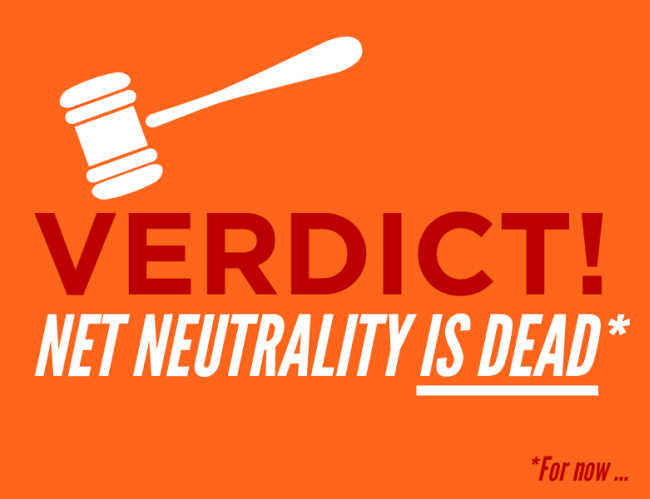Top 10 tech controversies of all time
Everyone loves technology and now it is so common that big tech companies can easily exploit our senses and lives. Read on to find out the most famous tech controversies of all time.

1. Nokia fakes ad
Nokia launched the Lumia 920 in late 2012 and released a nice advertisement video highlighting the video quality and most importantly the Optical Image Stabilisation feature. The advertisement looked absolutely brilliant and the picture quality along with the OIS technology seemed really out of this world. Too bad, Nokia faked that. When the advert was examined frame by frame, there was an instance where a reflective surface revealed that the advert was actually shot using a professional camera crew with a proper setup and not the Nokia Lumia 920. The cat was out of the bag and then Nokia went into damage-control mode. An apology was released where the company said that the advert was an attempt to simulate the effects of the new OIS technology and their intention was not to mislead. Along with the apology they released another video which was shot using the Nokia 920 and actually showcased the OIS technology.
 Survey
Survey2. Snowden blowout
Everyone knew that United States spies on anyone and everyone on the planet. The sheer scale of this kind of spying had been depicted in varying details in a host of fictional works. Even when little incidents of spying were reported in the media, no one paid any attention. That’s until Edward Snowden, leaked a bunch of classified documents to the world’s media. Things like these had happened before but what added credibility to this person was the fact that he worked for the CIA and then for the NSA. Both hardware and software backdoors were reported to exist in a load of products manufactured by US companies. The German government even released an advisory urging German companies to avoid using software products and services made by United States companies. U.S went on to a ridiculous extent of having the Bolivian President’s plane forced to land when rumours surfaced that Edward might’ve been traveling with him.
3. Mobile benchmark cheating
One of the ways mobile phone hardware are compared is by running a synthetic benchmark. Antutu and GFXBench are two of the most popular mobile benchmarking software. So when a certain Samsung smartphone achieved a spectacular score, people got wary. After all there were other phones with similar hardware but they didn’t score well. So someone used the very same benchmark software but gave it a different name. This time the phone didn’t give the same score despite multiple runs. Samsung’s firmware was then analyzed and found to have a little script that increased the processor’s capabilities only for benchmarking software. When this little piece of information was released, people started following the same process for different phones and a few other manufacturers including HTC, LG and ASUS were found to be cheating in the benchmarks as well. These devices were later de-listed by the benchmarking companies.
4. Silk Road takedown
No this isn’t the ancient silk trading route that we’re talking about but a marketplace on the dark web. The dark web is a separate internet on its own with high anonymity. ‘Silk Road’ was a website where you could indulge in all sorts of illegal activities from buying narcotics, foreign currency and high-calibre weapons to hiring hackers and assassins. The FBI went after Silk Road primarily for the illegal narcotics trade and it took them years before they could zero in on the culprits. This could be attributed to the fact that Silk Road used anonymous crypto-currencies for most transactions. When the FBI finally took it down they also dismantled a huge chunk of the dark web and took down as many TOR routers as they could. While this was a major loss for the people behind Silk Road it wasn’t that long before Silk Road 2.0 reared its ugly head and is still online. Dead Pirate Roberts, the person behind Silk Road is actually a moniker that was handed down from the previous administrator and it won’t be long before the next dead pirate rises.
5. Net neutrality death
Net neutrality is a concept which requires each and every customer of an ISP to be treated on equal footing. The plan that one subscribes to will affect the bandwidth cap and the data transfer limit (also known as the FUP limit). However, the quality of the connection which includes the contention ratio and routing should be the same. This is what Net Neutrality is all about. What the ISPs in the USA wanted to do was to have two lines. One which has a high contention ratio which means that when a lot of people use the line the quality of the line drastically reduces. The other line would be a premium line where a high quality is maintained even if the number of users sharing the line increases. These ISPs finally had their way when the net neutrality laws were thrown out by the federal court. Indian laws can be described to be archaic compared to the law in the USA and when the legal system in that country goes for a toss our ISPs could follow suit.
6. Hacking
The importance of having unique passwords for each service that you sign up for was made all the more clearer last year. Forbes, Kickstarter, Adobe, Target, University of Maryland, Linkedin, eHarmony, Last.fm, Twitter etc. are just some of the companies that got hacked and have confirmed data theft. If you’ve had an account on any of these sites then you need to change your password. While hacking incidents targeting individuals are numerous (even the website of Nepal’s President was hacked) many of the victims pointed the finger at chinese hackers. A security company called Mandiant released a report highlighting a Unit 61398 of the People’s Liberation Army. Turns out it’s a Cyber Warfare department of the military which has been accused for targeting government offices worldwide other than mainstream companies. You can check out the Lastpass website to figure out if your account was compromised.
7. Patent trolling
One fine day you’ll get a cease and desist letter mentioning a few vague technological terms. It so turns out that some little element in your company’s product, “infringes” a patent held by the complainant. You can either fight the patent in court or pay a moderate fee to settle out of court, often priced such that it seems to be the better option. Congratulations! You’ve encountered your first patent troll. Something as small as having a rounded rectangle design (patented by Apple) could entail a lawsuit from firms whose sole objective is to collect patents on the cheap (often from bankrupt firms) and then sue everyone on the planet.
8. Planned obsolescence
A commonly accepted practice when it comes to manufacturing is that of planned obsolescence. When a product is made it is designed to fail after a certain period of time. The printer industry is one of the most prominent culprits. Most printers have a page counter inside which counts the number of prints that have been printed since it rolled off the assembly line. Another way is to have circuits which prevent the ink cartridges from being used for a longer time. If that wasn’t enough then the printer uses all colour ink cartridges for printing black and white content, despite having a black cartridge separately. Even Apple does it but under the guise of “a brilliant design” which has the battery sealed inside the body and the only way it can be replaced is by sending it back to Apple for a hefty price. Even in electronic devices components that are sensitive to heat, are often placed right next to a heat source.
9. Console controversy
The eighth generation consoles had their own share of controversies with Microsoft’s XBOX One taking the cake. Months ahead of launch Microsoft announced it’s ‘Always On’ feature which meant that the console would pay attention for visual and audio cues 24×7 since gesture was part of the user experience. Critics on twitter were told to “deal with it” by a Microsoft employee who soon “quit on his own accord”. Then hardware issues were rampant, this included a grinding noise that many owners experienced. Lastly, swearing while using Upload Studio could get you banned from Xbox Live. The Playstation 4 wasn’t bereft of its share of controversies. Due to the poor treatment of employees at Foxconn (they made the PS4) certain employees started sabotaging units on the production line. This resulted in the blue light of death error for units. A video streaming feature on the PS4 was stopped after certain users started uploading mature/nonsensical content.
10. Bitcoins
Bitcoin has been riding a wild roller coaster ride with the exchange rates reaching ridiculous heights and then plummeting down to unknown depths. However, this isn’t the controversial part. Given the anonymity the currency became favored by a lot of illegal elements and thus the entire infrastructure around the crypto-currency came into the crosshairs of the law. One controversial incident was when a certain group of miners came together under a single pool and started mining. What started out as a common practice of getting coins faster became controversial when the cumulative computational power of this group neared 50% of the overall bitcoin computation in the world, this meant that the group alone could ratify or for that matter reject transactions on a whim, thus, giving them control over every transaction that would have taken place in the Bitcoin network, thankfully they stopped and enforced rules to prevent breaking the 51% barrier. A rather recent problem that cropped up is that of transaction malleability. Bitcoin transactions are one way only and requires a confirmation to mark a transaction as complete. One hacker managed to trick the system and make it seem as if a transaction did not take place at all, this caused the system to repeat the transaction over and over. However, money was still getting transferred and the hacker made away with $2.7 million!
.jpg)








